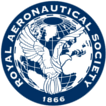One of the current challenges in the development of unmanned aerial vehicles (UAVs) has been how to fly small UAVs at low altitudes without collisions. Bill Read reports from the second day of the International Council of Aeronautical Sciences ICAS conference in Nice on some of the latest research into UAV control systems, including a remarkable research experience conducted using robotic sharks.
The pace of change in the world of unmanned aerial vehicles (UAVs) in recent years has been remarkable. Judging from the papers presented at ICAS, there are plenty of innovations yet to come. One of the current challenges being faced by UAV designs is that of autonomous flight in which the aircraft flies itself without a human operator. This is less of a problem at high altitudes with no obstacles but micro UAVs are expected to fly at low altitudes with plenty of other things getting in the way.
One session this morning was devoted to the challenges that need to be overcome to enable large numbers of small UAVs to fly safety in formation - in a similar way to flocks of birds. While the UAVs may have general instructions from an operator to fly from A to B, the actual mechanics of the flight is autonomous. The presentations looked at different ways that individual UAVs could detect and avoid each other and other obstacles without collisions, while still flying towards their ultimate objective. The problem of what to do if a UAV experiences a communication breakdown was also considered.
Another session featured a paper which studied the different flying characteristics of a morphing micro UAV which could change its shape by folding its wings and extending its tailfin.
Other presentations looked at the aerodynamic problems experienced with flapping flight small UAVs looking at both computer simulations and studies of dragonflies while a third strand looked at new designs, including solar-powered high altitude long endurance (HALE) designs, the problems of fitting control and other systems into a small space and new design concepts.
And finally…
One of the UAV presentations on the problems of controlling flocks of UAVs included a video of some tests done in a water pool in the Autonomous Flight Systems Laboratory at the University of Washington. In this test, what were described as four ‘UW fin-actuated autonomous vehicle systems’ attempted to swim across the pool in different directions without collisions. These aquatic cyborg UAVs bore a remarkable resemblance to robotic sharks - how long will it be before a James Bond supervillain orders some for his secret base?
More details of these and other projects will be featured in the November issue of Aerospace International.






